Palinopsia / seeing again
In 'Palinopsia / seeing again' Jurgen Meekel laser projects monochromatic images with a purplish-blue UV laser on a large fully covered glow-in-the-dark canvas. The elements appear line by line and continue to persist for some time. The projection surface records the image until it dissipates, where-after at some point a new image can be projected creating a new combined layered assemblage. The notion of the present and past, trace and decay, and the impossibility to observe time are central concepts in the work. Underscoring soundscapes create a dialogue with the images and echoing the temporal properties of the work.A one-time event in partial fulfillment of a Masters in Fine Arts degree. at Wits University, performed at the Point of Order gallery in, Johannesburg, South Africa.
In 'Palinopsia / seeing again' Jurgen Meekel laser projects monochromatic images with a purplish-blue UV laser on a large fully covered glow-in-the-dark canvas. The elements appear line by line and continue to persist for some time. The projection surface records the image until it dissipates, where-after at some point a new image can be projected creating a new combined layered assemblage. The notion of the present and past, trace and decay, and the impossibility to observe time are central concepts in the work. Underscoring soundscapes create a dialogue with the images and echoing the temporal properties of the work.A one-time event in partial fulfillment of a Masters in Fine Arts degree. at Wits University, performed at the Point of Order gallery in, Johannesburg, South Africa.
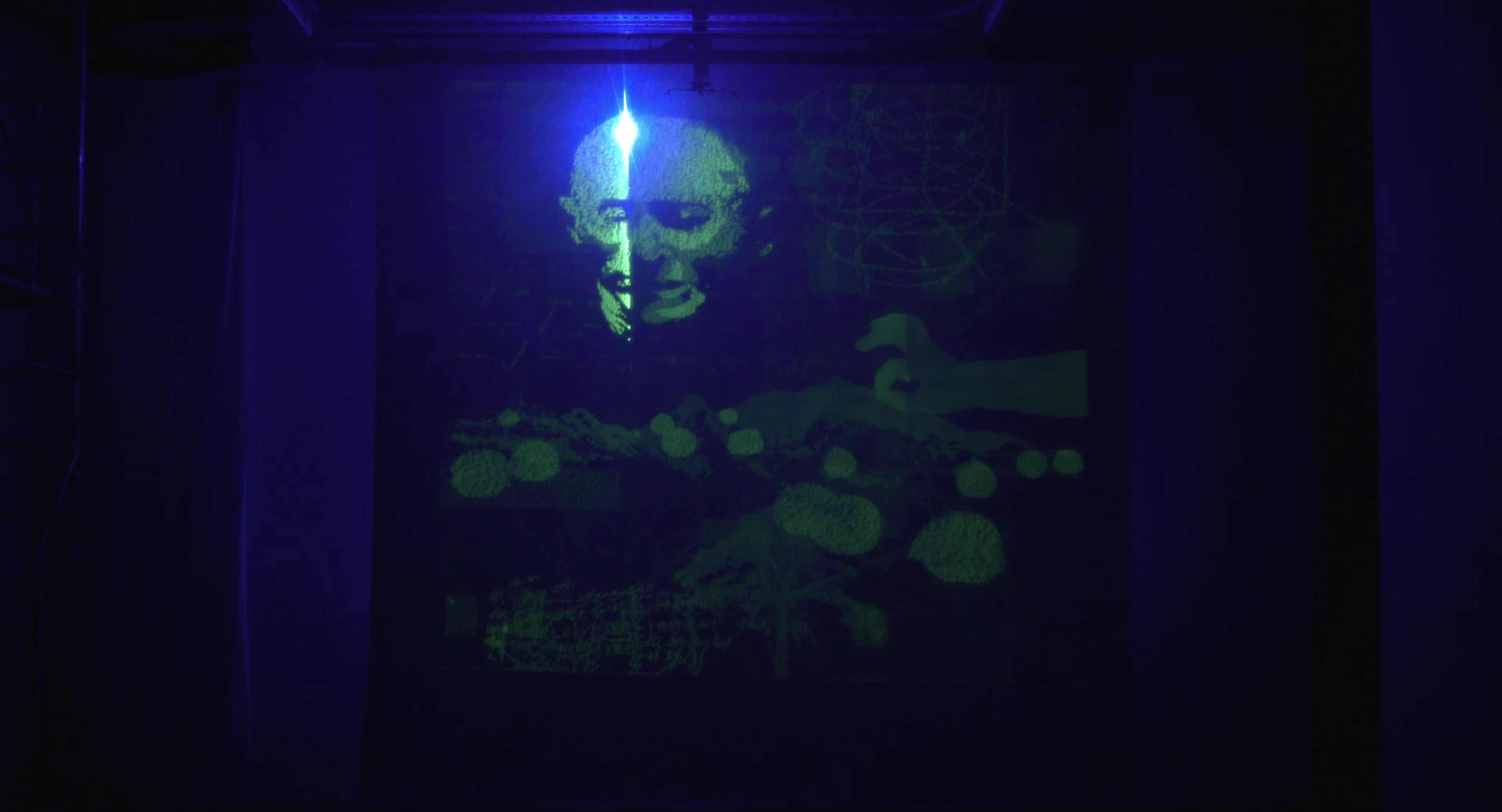
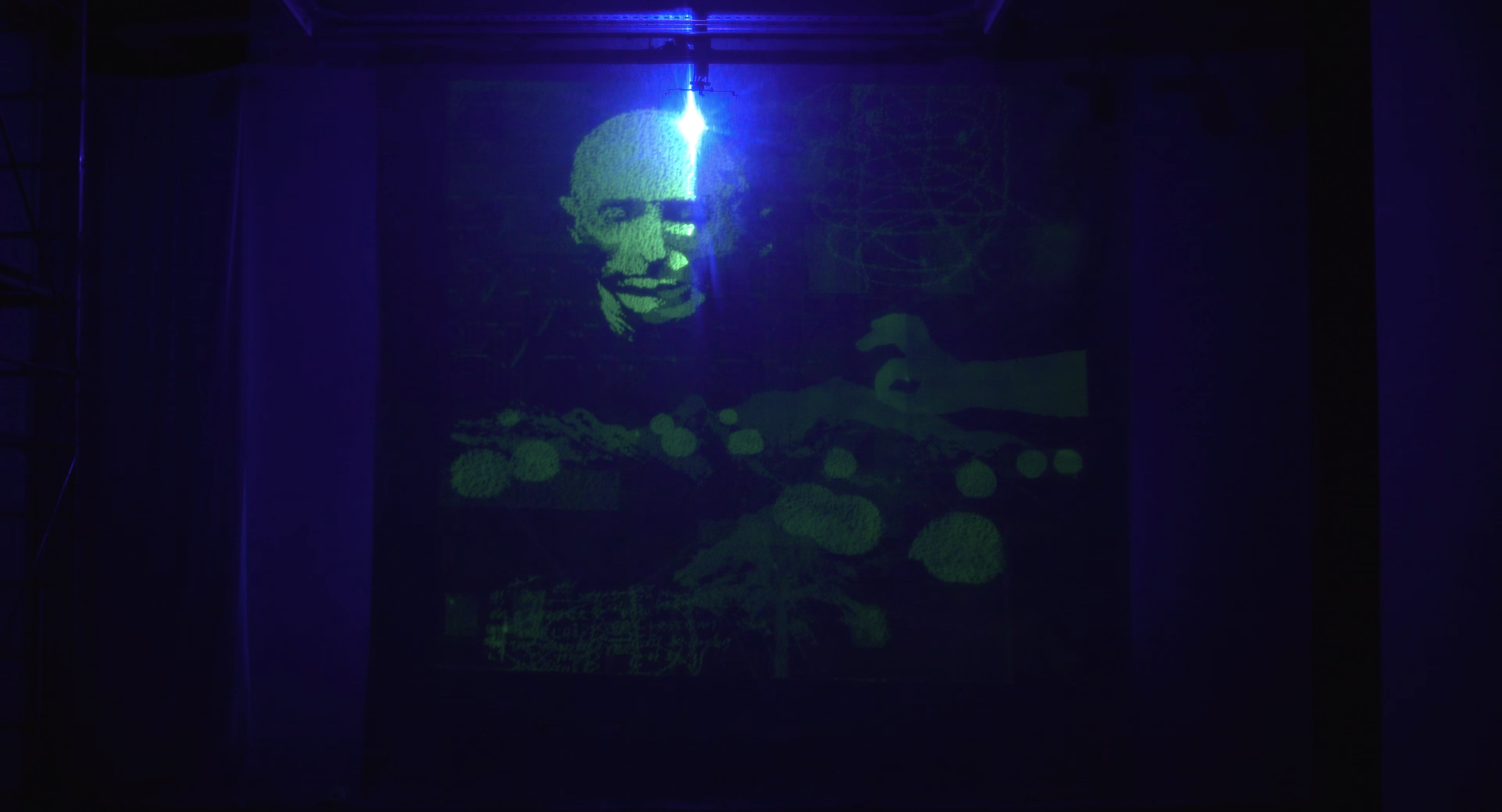
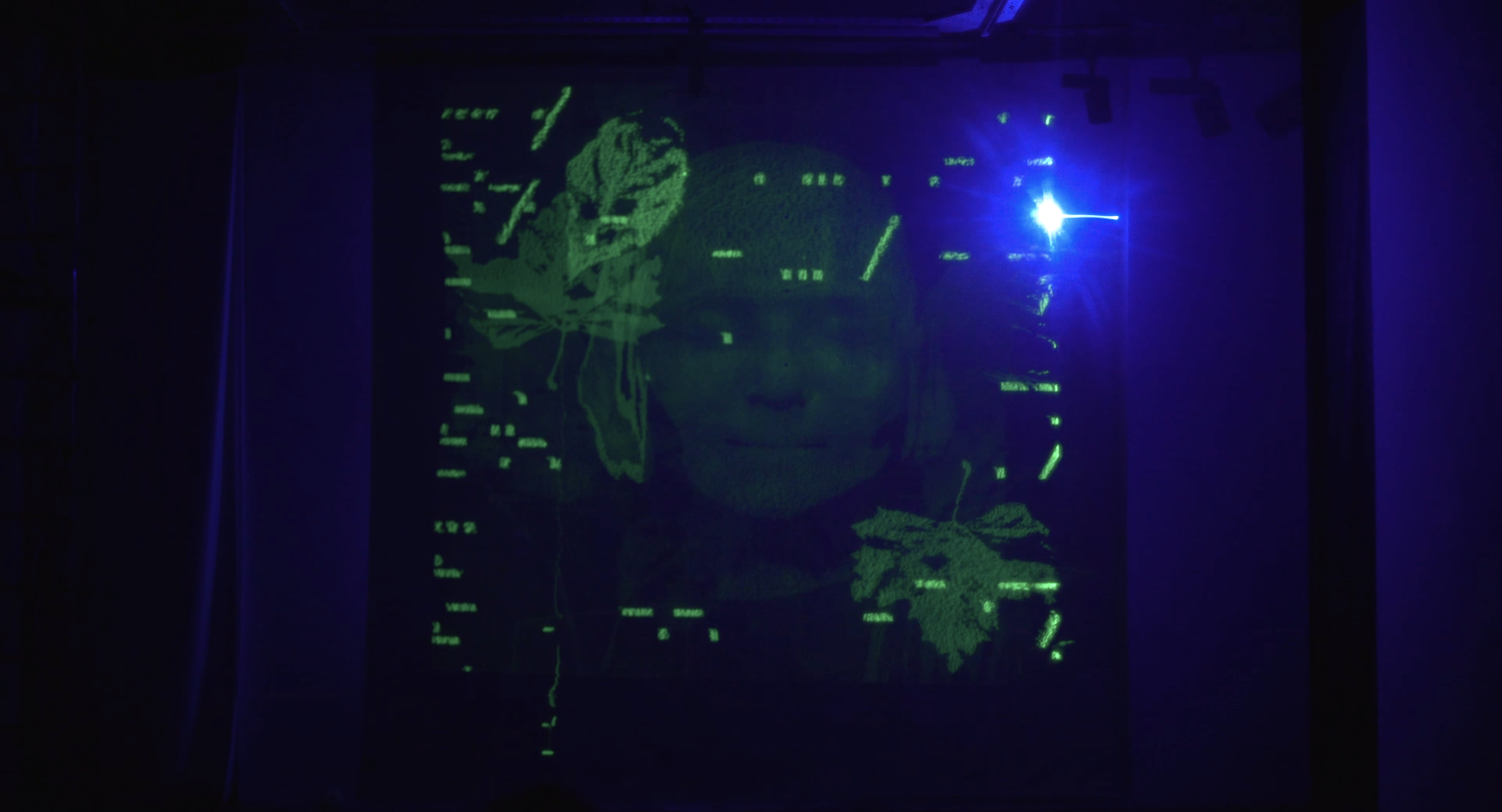
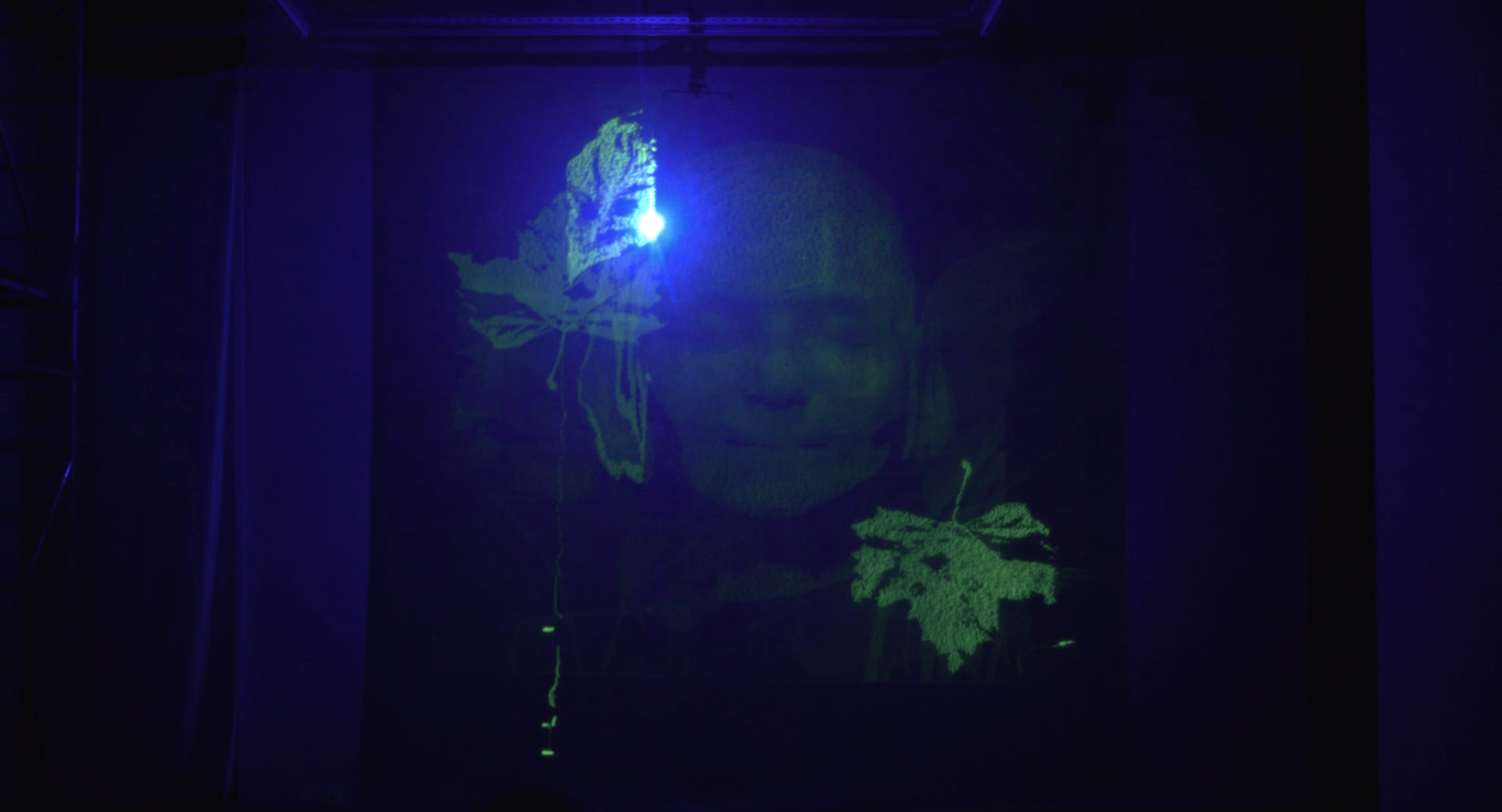

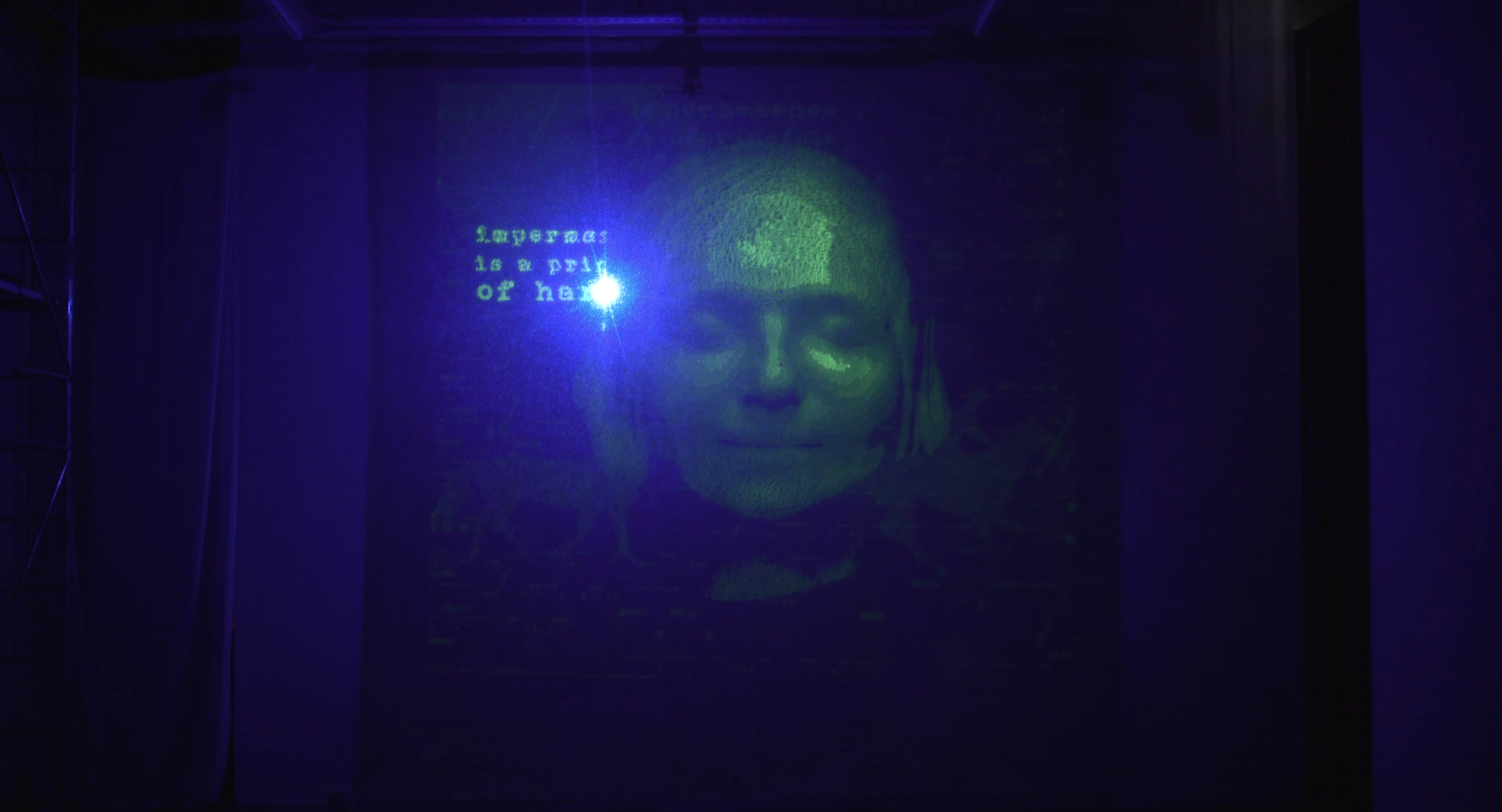
The most recent iteration of the work was the practical component for Jurgen’s MAFA exhibition: ‘Palinopsia: Images at their Ends: A Practice-based study in Traces, Temporality and Image Dissipation, using Glow In The Dark Laser Technology as a Medium for Contemporary Art.’
With a purplish-blue UV laser as a projection source and using fully covered painted phosphorescent canvas as the projection surface, after-glowing images are projected that appear line by line (much like a fax or inkjet printer). In this way, the projection canvas records the image. The projected image/text elements will diminish in luminosity over time. New elements are projected as the older ones fade.
When projecting with lasers onto a glow-in-the-dark surface the image will leave a clear green trace and remains visible for some time (4-6 min). After that, one can re-project over the remaining image to create a visual layering. The way temporality and perseverance leave a finite mark or trace of the projected image positions glow-in-the-dark laser projection between cinema and photography.
With a purplish-blue UV laser as a projection source and using fully covered painted phosphorescent canvas as the projection surface, after-glowing images are projected that appear line by line (much like a fax or inkjet printer). In this way, the projection canvas records the image. The projected image/text elements will diminish in luminosity over time. New elements are projected as the older ones fade.
When projecting with lasers onto a glow-in-the-dark surface the image will leave a clear green trace and remains visible for some time (4-6 min). After that, one can re-project over the remaining image to create a visual layering. The way temporality and perseverance leave a finite mark or trace of the projected image positions glow-in-the-dark laser projection between cinema and photography.
The proposed work for ISEA will be a collaboration between Jurgen Meekel and Jill Richards. Similarly to G-I-T-D laser projection, music operates on the basis of time. Therefore we have chosen existing contemporary musical pieces (recordings of my performances), self-composed pieces and pre-produced soundscapes from various audio recordings that have a relationship with temporality and decay. There will be 5 sections of each 10 / 20 minutes. The individual sections are different ways to engage and play with the medium, wherein some parts the improvised and premeditated music and sounds propel the projection and vice-versa in other parts.
Like this, an audience will also be able to distinguish the difference between the sound and the visual approaches. There will be overlapping transitions in visual and audio depending on the dissipation of the images and timing of the soundscapes. It takes around 8 minutes for an image to fully dissipate and we will also use sounds that linger.
ISEA -
(international electronic arts symposium) - Durban 2018
(international electronic arts symposium) - Durban 2018
Palinopsia / seeing again
ISEA international electronic arts symposium - Durban ‘ - in collaboration with Jill Richard (sound score) The piece was performed for ±2 hours for an audience..
In the installation piece ‘Palinopsia / seeing again’ Jurgen Meekel laser-projects monochromatic images with a nearly invisible purplish-blue UV laser on a large fully covered glow-in-the-dark canvas. The visual elements appear line-by-line and continue to persist for some time. The projection surface records the image until the image dissipates, where-after at some point a new image can be projected creating a new combined layered assemblage.
The notion of the present and past, trace and decay, and the impossibility to observe time are central concepts in the work. Underscoring soundscapes that were created in collaboration with Jill Richards form a dialogue with the projected images, echoing these temporal properties.
‘…it may just as well be compared to a continual rolling up, like that of a thread on a ball, for our past follows us, it swells incessantly with the present that it picks up on its way; and consciousness means memory.’ - H. Bergson, 1903
‘The past grows gradually around one, like a placenta for dying.’ - John Berger, 1984.
ISEA international electronic arts symposium - Durban ‘ - in collaboration with Jill Richard (sound score) The piece was performed for ±2 hours for an audience..
In the installation piece ‘Palinopsia / seeing again’ Jurgen Meekel laser-projects monochromatic images with a nearly invisible purplish-blue UV laser on a large fully covered glow-in-the-dark canvas. The visual elements appear line-by-line and continue to persist for some time. The projection surface records the image until the image dissipates, where-after at some point a new image can be projected creating a new combined layered assemblage.
The notion of the present and past, trace and decay, and the impossibility to observe time are central concepts in the work. Underscoring soundscapes that were created in collaboration with Jill Richards form a dialogue with the projected images, echoing these temporal properties.
‘…it may just as well be compared to a continual rolling up, like that of a thread on a ball, for our past follows us, it swells incessantly with the present that it picks up on its way; and consciousness means memory.’ - H. Bergson, 1903
‘The past grows gradually around one, like a placenta for dying.’ - John Berger, 1984.
